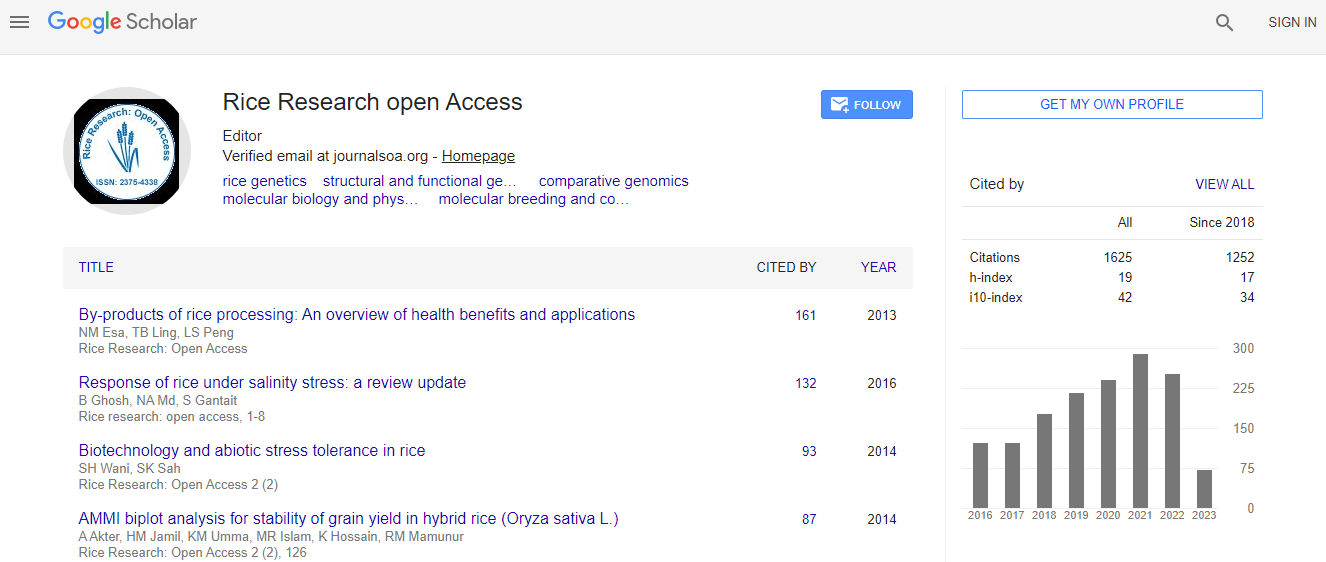Research Article
Effects of Citric Acid and Butylated Hydroxytoluene Alone or In Combination on Prevention of Rancidity of Rice Bran during Storage
NSBM Atapattu1*, KP Wickramasinghe1,Thaksala serasinghe1,SP Gunarathne2
1Faculty of Agriculture, University of Ruhuna, Sri Lanka
2Faculty of Veterinary Science, University of Peradeniya, Sri Lanka
- *Corresponding Author:
- NSBM Atapattu
Faculty of Agriculture
University of Ruhuna, Sri Lanka
Tel: 94-71-5303531
Fax: 94-41-2292384
E-mail: mahindaatapattu@gmail.com
Received date: October 21, 2013; Accepted date: November 13, 2013; Published date: November 15, 2013
Citation: Atapattu NSBM, Wickramasinghe KP, Srasinghe T, Gunarathne SP (2013) Effects of Citric Acid and Butylated Hydroxytoluene Alone or In Combination on Prevention of Rancidity of Rice Bran during Storage. J Rice Res 1:114. doi: 10.4172/2375-4338.1000114
Copyright: © 2013 Atapattu NSBM, et al. This is an open-access article distributed under the terms of the Creative Commons Attribution License, which permits unrestricted use, distribution, and reproduction in any medium, provided the original author and source are credited.
Abstract
Rice bran (RB), a byproduct of rice milling process is a valuable feed resource for the livestock industry. Both lipolytic and oxidative rancidity starts right after bran is removed from the grain during the milling process thereby making long term storage of RB difficult. Anti oxidants such as butylated hydroxytoluene (BHT) control the oxidative rancidity only for a short period of time. Therefore, effective rancidity control measures need to be adopted to maintain the nutritive and feeding value of RB. The objective of this study was to evaluate whether rancidity of RB could be curtailed by storing RB with citric acid (CA) and BHT alone or in combination.
RB was collected immediately after milling and stored with three levels of CA (0, 2, and 4%) and three levels of BHT (0, 200, and 400 ppm) in a 3×3 factorial arrangement. Each treatment combination had three replicates. Treated RB was stored in plastic containers with a closed lid for 82 days and analyzed for peroxide value (PV) and pH on 7, 25, 55, 82 days. The mean PV of un-treated RB on day 7 (2.85 meq kg-1) increased to 14.42meq kg-1 during 82 days of storage. When BHT or CA was not used, a significant (p<0.05) negative correlation was found between PV and pH [PV=(7.3291–pH x 0.112; R2=0.901]. Peroxide values were not significantly (p>0.05) affected by BHT or CA on day 7. The use of 0, 200 or 400 ppm BHT significantly reduced the PV during 25 days of storage time, but not thereafter. The use of 2% or 4% CA significantly (p<0.05) reduced the PV up to day 82. It can be concluded that BHT was effective in reducing rancidity of RB only for about month whereas CA controls both lipolytic and oxidative
rancidity for about three months

 Spanish
Spanish  Chinese
Chinese  Russian
Russian  German
German  French
French  Japanese
Japanese  Portuguese
Portuguese  Hindi
Hindi 
